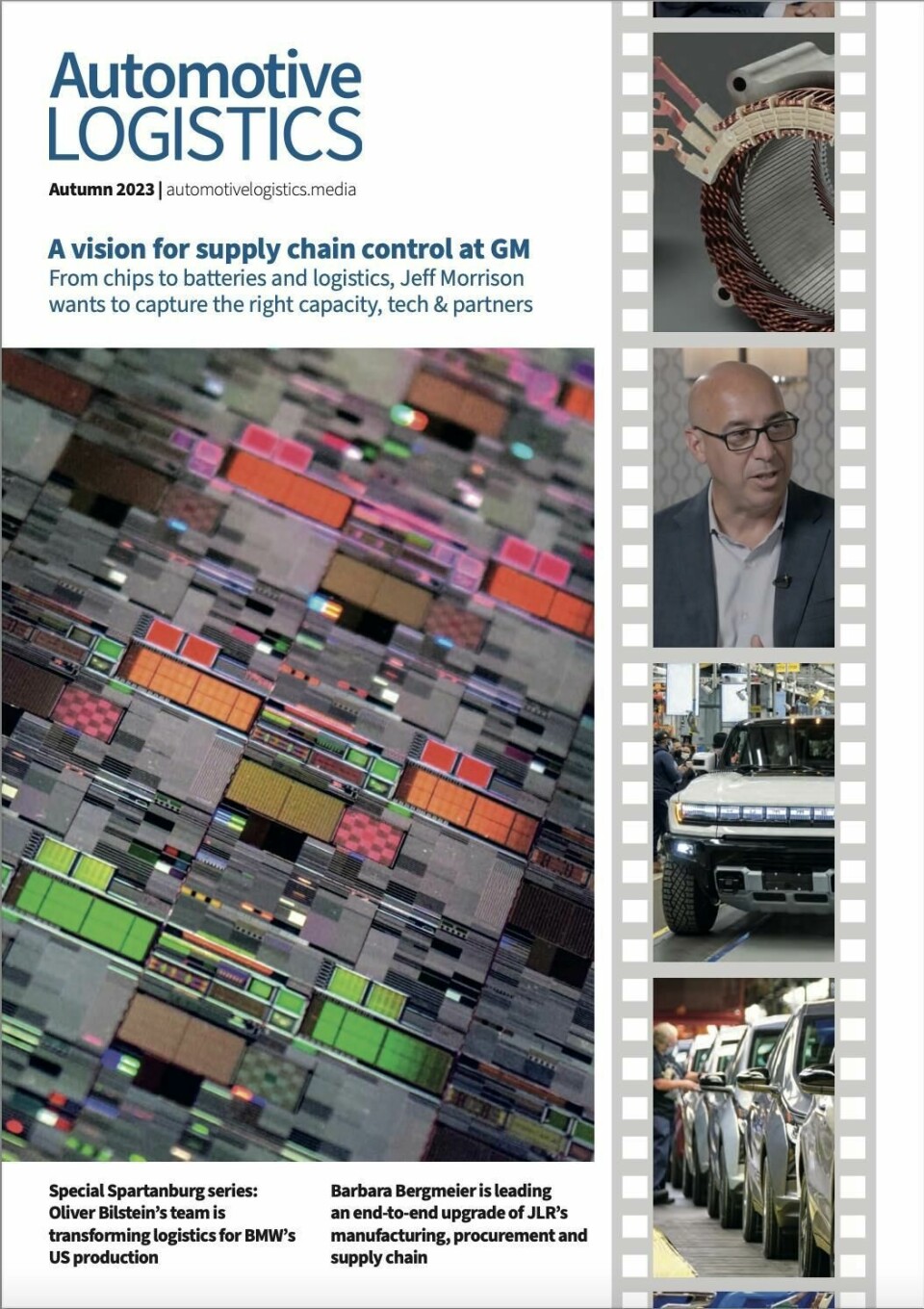Automotive Logistics Magazine - Autumn 2023
The autumn edition of Automotive Logistics Magazine features interviews with OEMs who explain what they are doing to improve visibility, leverage data analytics and implement automation, from network planning to lineside delivery
Download digital edition below

Running a reliable, efficient automotive supply chain depends on strong planning, advanced systems, capacity alignment and partnership. But true supply chan mastery will need a balance of two, seemingly contradictory objectives: designing as much standardisation and repeatability into processes as possible, whilst expecting constant change. Although getting the first part right helps with the second, manufacturers can no more avoid unexpected disruptions than we can in our personal lives, whether it’s a system breakdown, extreme weather, supplier fires or geopolitical strife. Companies will get caught out.
Even expected events can wreak havoc – as I write, the North American industry is bracing for possible strikes in the US and Canada at GM, Stellantis and Ford. Supply chain managers are building up inventory and prioritising models, but if the lines stop, supply chains will be hit, too. Likewise, the build-up of ships in the Panama Canal because of low water levels will almost certainly cause shipping delays and rerouting, for example through the Suez Canal or to the US west coast – but there are already capacity issues here, such as the rail ‘land bridge’ across the US.
Supply chain executives must manage these bumps by anticipating issues and spotting risks in advance. That’s a priority now at top management levels. GM’s purchasing and supply chain boss, Jeff Morrison, has worked to de-risk the carmaker’s battery supply chain, including in processing cathodes and anodes (p16). Now, with the entire industry facing vehicle logistics capacity shortages, GM is ready to take the same strategic approach for logistics, whether through partnership or investment, to better control its destiny. At JLR, meanwhile, Barbara Bergmeier, who leads production, procurement and supply chain, has helped to develop direct relationships with semiconductor suppliers, and has invested in upgrading systems, including using AI to spot potential issues (p48).
BMW has taken similar approaches, from digital control towers to autonomous logistics in plants and warehouses. But even with state-of- the-art technology, operations (and people!) will need to be flexible. Oliver Bilstein, VP of logistics for BMW’s Spartanburg plant and US operations, explains how the carmaker is constantly adapting material and vehicle logistics flows (p32).
Making order of this chaos is all in a day’s work for logistics leaders, and you’ll find plenty more examples in the pages of this magazine.
Features include:
- Supply chain news analysis | read online ↗️
- Controlling destiny with Jeff Morrison | read online ↗️
- Finished vehicle logistics, the next chip crisis? | read online ↗️
- Building a resilient, flexible supply chain | read online ↗️
- Performing + transforming with Oliver Bilstein | read online ↗️
- Mastering material control | read online ↗️
- JLR’s end-to- end supply chain upgrade | read online ↗️
- North American Rail | read online ↗️
- Volvo Cars on sharing progress in logistics sustainability | read online ↗️
- AI in the supply chain | read online ↗️
- Packaging parts for a changing market | read online ↗️
- A new concept for the intermodal supply chain | read online ↗️
- A logistics vision for our time | read online ↗️
- Global shipping solutions with trust on board | read online ↗️
- Pre-empting and preventing shipping damage in FVL | read online ↗️





